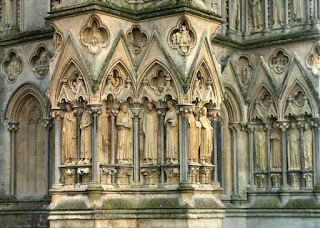THE INDUSTRIAL REVOLUTION
Documentary my Andrew marr - https://www.youtube.com/watch?v=x9BdVHCuNPs
The industrial revolution brought engines, the locomotive and thus tramlines all over England, social transformation as those living outside the cities moved in, production on mass scale, change of hierarchy, protests due to decrease in available jobs, etc.
MODERNITY
The Shock of the New - https://www.youtube.com/watch?v=J3ne7Udaetg
The industrial revolution developed into the age of Modernity. 18th & 19th century, but mostly 20th in all areas of life; Industry, mass manufacture, concentrated populations, development of trade and capitalism, colonisation, science and technology, urbanisation, secularisation, mass media, division of labour, mass consumption, culture reinvention, etc. Immediacy. Progress away from the burden of tradition.
Modernism - cultural output of modernity.
Movements: cubism, surrealism, futurism, de stijl, art deco, interactional type, bauhaus, Russian constructivism, etc.
As a project it is embracing science. Rationality and progress.
Progression of art:
Impressionism (e.g. Degas)
Post-Impressionism (e.g. Cezanne)
Cubism (e.g Picasso)
Futurism (e.g. Boccioni)
Futurists experimental type was important as it pushed type forward.
Marinetti's Depeo uses screws to bind the book - functional.
Futurist architecture envisioned cities of the future, creating utopian designs, e.g. Antonio Sant'Elias.
Premodern art is decorative, beautiful and ornate, whereas modernist commercial art is very rational, functional and has rules in order for it to communicate.
Premodern commercial art:
Modern commercial art:
'High' modernism came after war, looking for change, renew, progress, cemented principles. Swiss graphic design (Switzerland weren't in the war).
Examples include Hoffman, Vignelli, Muller-Brockman.

Premodern architecture - Neoclassical, gothic, e.g. Well's Cathedral
Modernist architecture - rational, functional, e.g. Rietveld De Stijl's Schroder House
Modern art - experimental, abstract, new, expressive, progressive.
Modern design - functional, use of rules and principles, rational, universal, new, progressive.
People became cynical to the universalising claim of modernism, leading to postmodernism
Postmodernity
Uncertainty, pluralism, reworking, movements, no absolutes, collage of ideas, irrationality, pastiche, expressionism, choice.
Industrialisation → commercialisation
consumerism & commodification of lifestyle
decolonisation
globalisation
mass communication
transportation
eclecticism/pluralism/multiculturalism
digital age
Pluralism - taking different ideas and mashing them together.
Postmodernism is hard to define because the thinking tends to abandon any notion of 'concrete definition' - what can art be?
Conceptual art, e.g. Duchamp, Hirst, etc.
Graphics, e.g. Wolfgang Weingart, Paula Scher, April Greiman
Architecture, e.g. Reno Piano, Frank Gehry
Opinions on postmodernism:
- engaging yet ironic. Styles are adopted, juxtaposed, misused and reconstructed.
- e.g. Charles Moore, Piaza D'Italia
- e.g. Jonathan Burnbrook, Bastard typeface
- can be seen to celebrate diversity, but can also be appropriation
- cultural and capital exchange
- consumption and consumerism
- Jean Baudrillard 'images don't represent anything real anymore. They are everywhere, We reference images with other images, other things we've seen, not within the context. World of media with no real meaning or substance.



















No comments:
Post a Comment